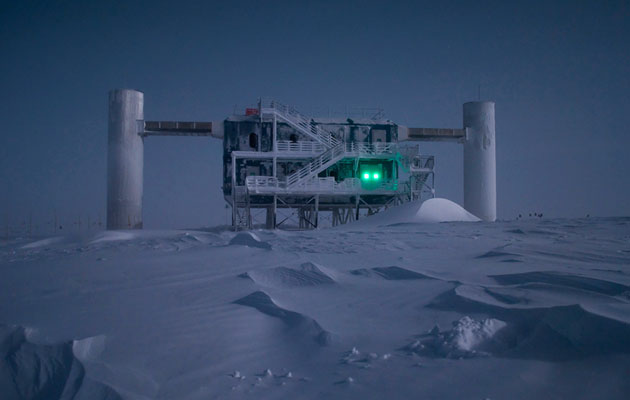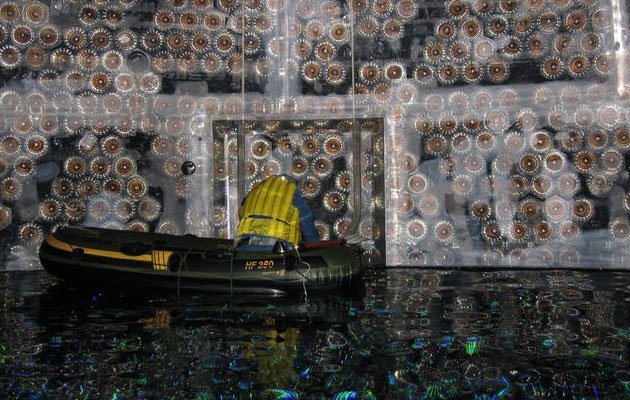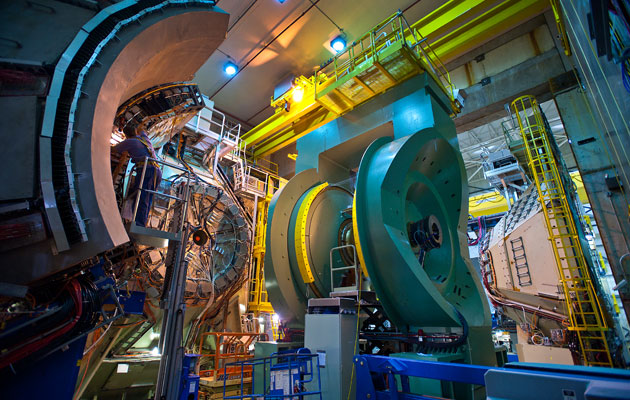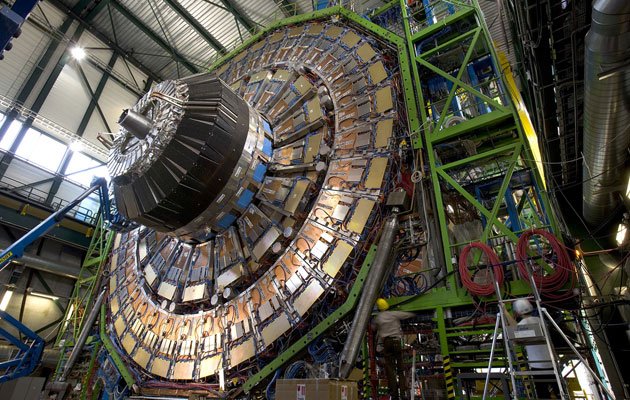5 most extreme laboratory in the world - Life Facts No.7
In the name of science and research, people have built laboratories in extreme conditions at extremely low temperatures, deep beneath the earth, or even in the universe. Thanks to them we have the opportunity to explore all of the earth's geology, biology, chemistry ... but to the creation of the Universe. You help us to better understand ourselves and to improve medicine and technology of the future.
These are some of the largest, most sophisticated and most extreme laboratory in the world.
5.Ice Cube

Coldest laboratories in the world
IceCube Neutrino Observatory, known as IceCube, the laboratory is located at the Amundsen-Scott South Pole Station in the Antarctic, the southernmost point on the planet.
IceCube is a particle detector at the South Pole that captures the interaction of particles called neutrinos - subatomic particles that have almost no mass, which can not pass through the normal things like a ghost. Perhaps at first glance seem illogical, but this laboratory has a duty to help in unlocking the secrets of the universe.
IceCube neutrino search coming to Earth from the most violent astrophysical sources: events like the explosion of stars, gamma-ray, and cataclysmic phenomena involving black holes. IceCube telescope is a powerful tool that can be used to study dark matter, and could reveal the processes associated with the enigmatic origin of energy particles in nature.
IceCube is a unique engineering project which cost 279 million dollars and was completed in 2010. The core laboratories, more than 5,000 digital optical modules, is buried at a depth of about 1500 to 2000 meters in 86 holes drilled in the thick ice. The project currently involves collaboration of about 250 physicists, scientists and engineers from 39 institutions (11 countries).
At the time of writing this article, the temperature around the Amundsen-Scott South Pole Station's amounted to -44 degrees Celsius, the lowest measured temperature was -82.8 ° C (23 June 1982).
- SNOLAB

The laboratory, which is located at a depth of 2 kilometers below the earth
's buried two kilometers below the surface, Sudbury Neutrino Observatory (SNOLAB) studies the phenomena occurring in the Universe.
SNOLAB is built in an abandoned mine in Ontario, Canada, on an area of about 5 square kilometers. This research focuses on astroparticle physics, including cosmic dark matter, low-energy solar neutrinos and neutrinos supernova. However, scientists from various other areas, including geophysics and seismology, have access to the lab for their research.
SNOLAB officially began operations in May 2012, and the entire laboratory is actually one big huge room which is located 2 kilometers underground. Within laobratorije there is one surface of buildings with offices, meeting rooms, IT systems, classrooms, storage ...
- Brookhaven National Laboratory (BNL)

Brookhaven National Laboratory (BNL) is the multi-purpose research institution located on Long Island, New York. Scientists at BNL to focus on the most exciting and the most important questions of applied science - from the birth of the Universe, to sustainable energy and the technology of tomorrow.
In February 2010, the Relativistic Heavy Ion Collider (RHIC) at the Brookhaven National Laboratory has produced a temperature of about 4 trillion degrees Celsius! This is the hottest temperature that man has ever created: 250,000 times hotter than the sun's core. This incredible achievement is a result of the collision of gold ions that are moving at nearly the speed of light, creating elementary particles in nature have only a tiny fraction of a second after the Big Bang.
RHIC is the second most powerful heavy ion collider, immediately after the Large Hadron Collider in CERN. It is the only facility in the world that can perform experiments with polarized protons collide.
BNL is composed of a large number of the most modern facilities for the study of physics, chemistry, biology, medicine, applied science, as well as a wide range of advanced technologies. The laboratory employs almost 3,000 scientists, engineers and support staff, and they are joined every year by more than 4,000 visiting scientists from around the world.
- CERN

The largest center for scientific research
by the European Organization for Nuclear Research, known as CERN, is the largest center for the study of elementary particles. To put it simply, CERN studies the smallest particles in the universe. To perform this task successfully, scientists at CERN have constructed some of the most sophisticated equipment, including the world-famous Large Hadron Collider (LHC).
CERN is located on the border between France and Switzerland. It is designed to reveal the secrets of the universe depicting conditions that occurred immediately after the Big Bang.
Large Hadron Collider (LHC) is the main and best known component of CERN. He is the world's largest particle accelerator located in a circular tunnel 27 kilometers long, buried 175 meters underground. It contains 9,300 magnets cooled by 10.080 tons of liquid nitrogen and liquid helium further. It happens every second 600 million particle collisions that generate temperatures 100,000 times hotter than the temperature at the center of the sun.
The immense amount of data generated by the LHC analyzes sophisticated supercomputer system consisting of tens of thousands of connected computers. Every great experiment create a sufficient amount of information to be stored in the 100,000 dual-layer DVDs.
Today, 20 states managed by CERN. These countries share responsibility for financing, but also have an advantage when using its many facilities and laboratories. Other countries have the status of partners, but also they can use CERN's laboratory for experiments and research.
- Međunarodna svemirska stanica (ISS)

The laboratory, which is located at an altitude of about 390 kilometers above the earth
international space station (International Space Station (ISS)) is a laboratory which is located at an altitude of about 390 kilometers above the earth's surface, specifically in low-Earth orbit.
ISS is a joint project of 6 space agencies from 6 countries and currently supports researchers from 16 countries. Since 2000, the ISS crew rotates which usually arrives in this laboratory of the US or the Russian space shuttle infection and remains on the job for 6 months.
Simply provdeći time in orbit, the astronauts discover a lot more about how people can live and work in space. But ISS offers much more. This lab provides a unique platform for scientific research that can not be done any other way. The primary areas of research are astrobiology, astronomy, the study of medicine and the life sciences in the Universe, general physics, materials science and meteorology.
Get a good upvote
🎋
Hi steemiren
Fallow me then send a massage
I will give you follow back and good upvote
And
I invite you to join our steem group.
https://c3k93.app.goo.gl/i/XhQ1i
🎋
Congratulations @boki9! You have completed some achievement on Steemit and have been rewarded with new badge(s) :
Click on any badge to view your own Board of Honor on SteemitBoard.
To support your work, I also upvoted your post!
For more information about SteemitBoard, click here
If you no longer want to receive notifications, reply to this comment with the word
STOP